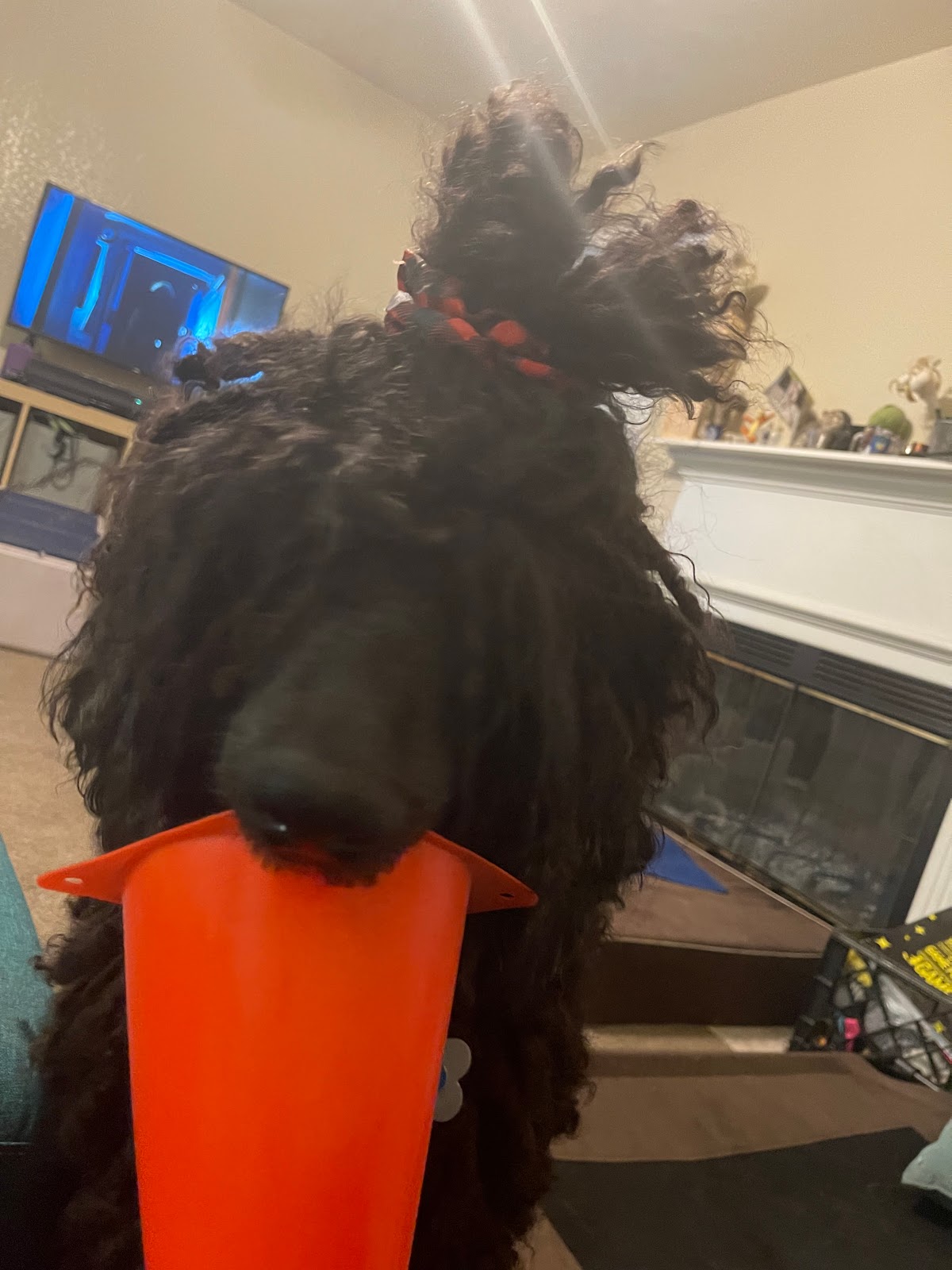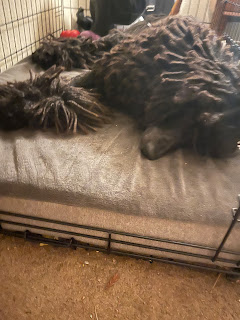As an Amazon Associate I earn from qualifying purchases
First aid for dogs is good to know, even if you don't have pets. The priorities are the same for humans and animals, Airway, Breathing, Circulation.
Always have your dog checked if there is anything going on, even if symptoms seem to have resolved after applying first aid.
Airway, the ability to move air in and out of the lungs is and should be the first priority.
Without an airway, oxygen cannot get to the lungs. There are many things from swelling and trauma to choking that can obstruct an airway.
Swelling that might obstruct the airway would be any swelling of the mouth, lips or tongue. This can be caused by something the dog has put in their mouth, even if they didn't swallow it. An example, local to me, is a frog that secretes something that makes dogs faces swell. It happened to my Newfoundland, and every other dog she played with at a creek near my house. Dogs can take diphenhydramine, sold under the brand name Benadryl, but is something you need to check with a veterinarian before administering. The dose is weight dependent. Benadryl comes in a liquid for children, which makes it easier to give to a dog that might be having difficulty swallowing, which will be an issue with swelling.
Trauma to the airway can also cause difficulty with moving air, or obstructing the airway. This will be case specific on what can be done. Unless you are trained, inserting an airway can be dangerous and cause more damage to the air way.
Obstruction to the airway, such as choking can be caused by eating a toy or object that is too big to swallow. In this case, removing the object, either with a finger sweep or the Heimlich Maneuver are simple techniques that can save your dog's life.
Breathing is the second priority
Breathing is the act of moving air in and out of the lungs. There are many reasons a dog may not be able to breath. Preforming rescue breathing for dogs is possible, and fire trucks now often carry. oxygen and masks desired to be used on pets.
Knowing how to perform rescue breathing for your dog is important to keeping the airflow going. First, check for a forgone object in the airway by pulling the tongue out until it's flat. If there is something, remove it with a gentle finger sweep. After doing this, close the mouth, then breath into your dog's nose until the chest rises. Do this in a steady fashion. If possible have someone else call the vet to see what to do next.
Circulation
Circulation is all about blood flow. If the heart is not beating, CPR can be started. This is done by compressing the chest, to compress the heart to simulate regular heart action.
Circulation also involves any bleeding or blood loss, so this is internal and external bleeding. If you see a large amount of blood, it's important to stop bleeding as fast as possible. Ideally, the wound is cleaned and dressed with a sterile dressing, but this is not always realistic. If the blood is pulsing or spurting, that means an artery has been compromised. In that case a stopping the bleeding takes priority over cleaning the wound. Apply pressure, ideally at the spot the pulsing blood is coming from.
With all bleeding applying pressure will allow the blood a chance to clot and form a natural patch.
Peri pads, or maxi pads make great dressings because they will absorb blood while decreasing the flow rate of the bleeding. Vet Wrap, Coban, also known as self sticking bandage wrap is nice for holding these dressings in place. Vet wrap has other uses as well, such as protecting paw pads from rough terrain.
Poisoning
Poisoning is an issue anyone with pets should be concerned about. Prevention is key, like most other aspects of trauma. Training dogs not to put things in their mouth without permission is key here. This does not mean not to train a retrieve. On the contrary, training to bring things to you that do not belong to the dog will prevent most cases of ingesting things they should not. It also solves a host of other issues.
If your dog does eat something you are unsure is safe or not, call Animal Poison Control. The people who work there have the resources to tell you what steps to do next at their finger tips, and are a resource for the veterinarians treating dogs as well
Keeping the phone number and address of your local emergency veterinarian should be a no brainer, program it into your phone and post it on the refrigerator with your other emergency numbers, so if your busy taking care of the dog, someone else with you can easily make the call.
This is a great link to basic first aid for pets.
A simple first aid can also be made with a child's diaper, a pair of tweezers, a pair of small bandage scissors, liquid Benadryl, and vet wrap. Wrap all the supplies in the diaper.
Part of effective first aid is looking at things you have on hand or can easily carry that can be used for dual purpose so you are not adding too many things to what you carry.
Training
 |
| Really? Why do I need a muzzle? |
Training is important to keep your dog as calm as possible when dealing with emergencies. A dog that is comfortable with something on his or her face, being in a crate, being handled, and the noise and sensation of things like clippers, will be less stressed when being handled by emergency carers, especially if you are not able to be with your dog for any reason.
Things to have in your first aid kit.
Keeping a basic first aid kit is simple and something we should all have. Be ware of getting a first aid kit that is just small bandages, it likely will not have enough resources to treat what needs to be treated in the field or at home. Again, I recommend having maxi or peri pads and vet wrap on hand. My sister was kicked by her horse and needed sutures. When she arrived at the emergency room with her leg bandaged with a maxi pad and vet wrap, the treating physician was impressed with her "improvised" dressing.
Basic first aid is about dealing with the issue at hand, in the situation, and following up with the veterinarian as soon as possible. Ideally we would all have a way to carry our dogs out of the wilderness if an injury occurred. Other options might be a vehicle rescue, depending where you are.
A car first aid kit and one in your house is a must. Things like extra leashes, a carry sling, bandages, air splits and medications you or your dog might need. This is someplace I would consider keeping emergency medications, but note that cars get hot in warm environments and medications will go bad quicker if exposed to too much heat. Carrying those medications in the daily go bag or purse would be a better option. Also be sure to check expiration dates on the medications and bandages regularly, and replace all that are out of date.
This is a great first aid kit for dogs that go places.
The Go Bag
I keep a go bag from my dog. It has extra leashes, a long line, his shoes, water, bowls, treats, a muzzle, and usually acts as my purse, holding my phone, keys, wallet, lip balm, a small container of vaseline, and Musher's Secret.
I love the Osprey Daylite Plus day pack because it doesn't feel like I'm wearing a pack when it's on. I took it on an overnight trip last summer, and had to carry it everywhere I went. I was impressed with how comfortable it is to wear, how much it holds, and how light it is. There are two water bottle pockets, many zip pockets, and even a sleeve inside that can hold a lap top, papers, or a water bladder with a straw.
Musher's Secret can be used in cold and heat to protect paw pads and noses from the sun, heat and cold, as well as chaffing. I've been known to rub some into my hands when they are dry. This is one of my favorite dog products.




No comments:
Post a Comment